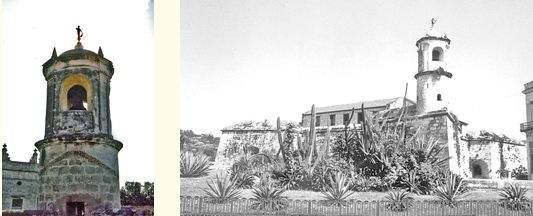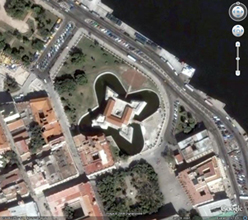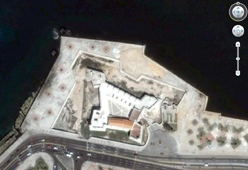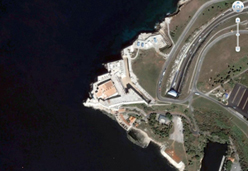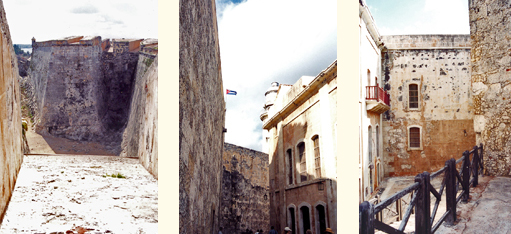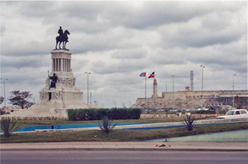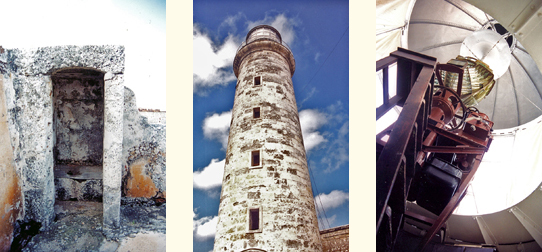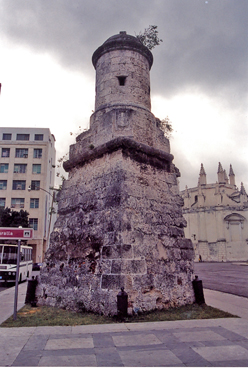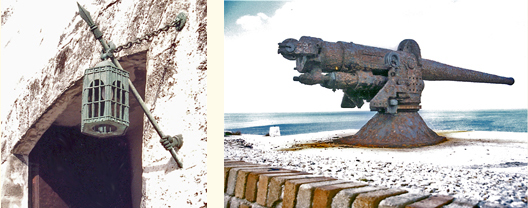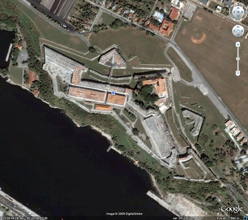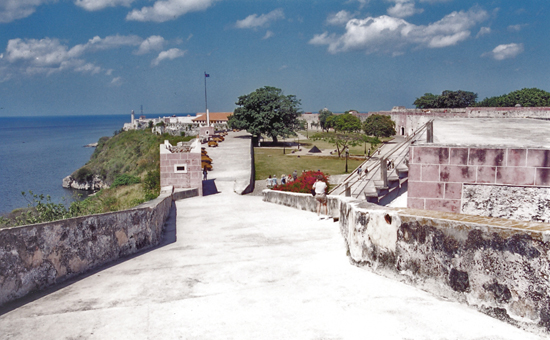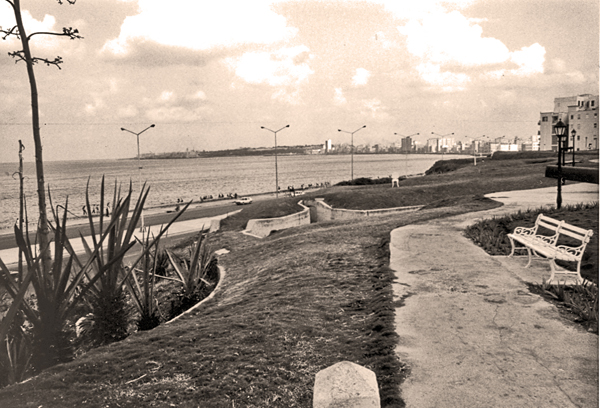Located on the Gulf of Mexico where the Florida Straits feed into the Gulf Stream, Havana was by far the most important port for the Spanish in the New World. Protecting the narrow entrance to a spectacular natural harbor is a series of forts, parts of which date to the sixteenth century. |
|
|
El Castillo de la Real Fuerza, begun in 1558, is considered the oldest European fortress in the Americas. Built to protect against pirates, it was found to be too far from the sea, which led to the construction of El Morro and La Cabaña. |
Real Fuerza |
|
View north from Castillo de San Salvador de la Punta on the south side of the entrance to Havana harbor.Castillo de los Tres Reyes Magos del Morro is at left and Fortaleza de San Carlos de la Cabaña at right. |
La Punta |
|
El Morro was not built all at once, but rather is a series of fortifications that evolved along the headlands above the harbor entrance. From the fort, there are spectacular views of the city and the entire length of the Malecon. |
El Morro |
|
Maintaining masonry walls in a marine environment is not easy. In a few protected areas, e.g. at right, historic finishes have been conserved, with very limited restoration so that visitors can get an idea of how the fort might have looked two hundred years ago. |
View of El Morro from the Maximo Gomez monument and the entrance to the highway tunnel under the harbor. |
|
As in the city itself, historic electrical and plumbing systems and fixtures remain in use, which was all very interesting in spite of the fairly scary condition of the wiring in the lighthouse (built 1845) and elsewhere. The privy at left appeared to remain in use. |
Havana Vieja was a walled city until they were mostly demolished in the 1860s. Today only two or three of the watchtowers remain. |
|
Bronze can survive a marine environment; ferrous materials cannot. |
La Cabaña |
|
View north to El Morro from La Cabaña. Here, too, they have not tried to recreate all of the historic pink stucco finish that covered the rough masonry walls. The stucco was was also scored and pencilled to resemble ashlar. |
|
|
View south from La Cabaña of the harbor and Havana Vieja. | |
|
And from the Cold War, a series of concrete trenches and tunnels burrow through the grounds of the Hotel Nacional a couple of miles west of El Morro. Narrow and claustrophobic inside, with little horizontal gun ports through which one could peer across the straights toward Florida. |
![]()
